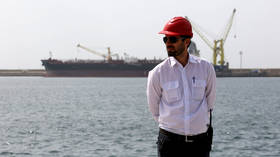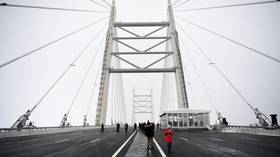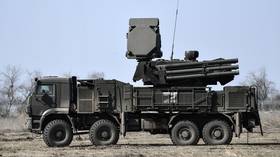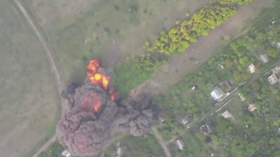India and Iran stepping up efforts to route shipments via Chabahar port

In a move to boost trade with Russia and Central Asia, India and Iran are looking at scaling up operations of the International North South Trade Corridor (INSTC) via the strategic Chabahar port, which is being developed using investment from New Delhi.
A trial run between India and Russia via Iran is likely to be carried out within the next six to eight months and will go through Chabahar port on the Gulf of Oman in southeast Iran, the Mint business newspaper reported on Tuesday, citing Mohammad Miri, an adviser to the Chabahar Free Zone. A year ago, the first trial shipment via the INSTC corridor was sent from the port of Astrakhan in southern Russia to India’s Jawaharlal Nehru port in Mumbai, but went via another, more established Iranian port, Bandar Abbas.
However, Chabahar port is vital to New Delhi’s interests, and India has been investing in setting up operations there since 2016. It is seen as a counter to Pakistan’s Gwadar port on the Arabian Sea, which was developed in the early 2000s with the help of significant Chinese investment and is linked to the China Pakistan Economic Corridor (CPEC), launched in 2015.
Chabahar port consists of the Shahid Kalantari and Shahid Beheshti terminals, each of which has five berth facilities. Since 2019, India has officially assumed responsibility for the latter, where it agreed to install and operate loading equipment, including harbor cranes and to which New Delhi committed grant assistance of $85 million and a credit facility of $150 million.
The Chabahar Free Trade Zone authorities held a meeting with Indian Ambassador to Iran Rudra Gaurav Shresth last week, reported in Indian and Iranian media, where they discussed linking free trade zones between Chabahar and an Indian port. India’s envoy noted that the port represents a golden opportunity for India to expand its economic ties, the IRNA news agency reported on Monday.
Chabahar is Iran’s first deep water port, suitable for handling large shipment vessels, and is central to India’s effort to boost trade with Russia, Central Asia, and Afghanistan. The port is also vital for Moscow, which is bullish on establishing the INSTC corridor as an alternative to the Suez Canal, which would help it boost trade with India and other partners and partially overcome disruptions caused to global supply chains by Western sanctions.
The INTSC was formed in 2000 and ratified two years later following a pact between India, Russia, and Iran. It is a multi-modal corridor that spans over 7,200km and aims to ease the transportation of cargo among Afghanistan, Armenia, Azerbaijan, Russia, Central Asian nations, Europe, India, and Iran.
The sea route originates in Mumbai and passes through Bandar Abbas, Bandar-e-Anzali, and Chabahar in Iran, then crosses the Caspian Sea to reach Astrakhan in southern Russia, before moving to Moscow and St. Petersburg via rail links and road connections. Data shows that the INSTC is projected to reduce transit time by 40%, shortening it from 45-60 days to 25-30 days. It is also likely to decrease freight costs by 30% and emerge as a commercially viable alternative to the Suez Canal trade link between Asia and Europe.













